How to grow greens at home in winter
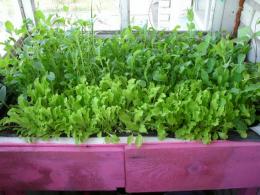
Greenhouses are now able to meet consumer demand for fresh greens year-round. In the summer, a lot of greens are grown in open ground, but with the onset of winter, greens from closed greenhouses are practically the only available option. Such greenery has two drawbacks. The first is the high cost of greenhouse products in winter.
The second drawback is the cultivation of varieties whose commercial qualities exceed their taste. The easiest option for growing at home is onions; just put the onion in water and after a few days you can cut off the green bunch. When choosing what to grow indoors, you need to find out what crops are suitable for this and how to grow greens at home in winter.
Content:
Growing lettuce on a windowsill
Green lettuce is a crop that very quickly grows green ground parts; in addition, it sprouts quite quickly. Another advantage of lettuce for growing at home is the fact that its root system is superficial and it does not require a large volume of soil.
Another advantage of the salad is the rich vitamin and mineral composition of its leaves and their universal use in cooking and folk medicine. When choosing varieties for growing on a windowsill, you should pay attention to the following varieties and early ripening varieties:
- Golden ball
- Snowflake
- Zorepad
- Raspberry ball
- Odessa

To sow lettuce seeds, it is better to choose a container about 20 cm deep. It is advisable to take at least two or three such containers. Sowing lettuce in them is done with a difference of 10 days, then there will be greens on the table without interruption. The soil for this crop can either be bought or made independently. To obtain 10 kg of soil mixture for growing lettuce at home, you need to take:
- garden soil 2 kg
- compost soil 2 kg
- rotted manure 2 kg
- peat 2 kg
- sand 1 kg
- wood ash 1 kg
- nitrophoska 1 spoon
- urea 1 spoon
Mix all ingredients well. Landing bottom pot for salad, it should have holes for the drainage of excess water. For drainage, you can use expanded clay or broken brick, or you can put a layer of padding polyester; although this material is not typical for drainage, it allows both water and air to pass through very well and does not rot. Having filled the pot with soil, it should be slightly compacted and watered a day before sowing. It is advisable to make the ground level 3 - 4 cm below the top edge, this will allow creating an air layer between the covering film and the ground.
Video on how to grow greens on a windowsill:
Sow lettuce seeds to a depth of 0.8 to 1.5 cm. After sowing, cover the box with film or glass. At this time, the boxes can be kept in a semi-dark room. From the third day, sprouts may appear. The pots are taken out into sunlight. On the fifth day, massive seed germination will begin. The film must be removed, and young plants must be provided with watering and additional lighting. In the first two weeks, it is advisable to water every other day, and you can spray the salad daily. Additional light should be provided using a fluorescent lamp mounted half a meter from the pot. Salad You need at least 14 hours of continuous lighting.Closer to spring, 12 hours will be enough. The first harvest can be cut after 21 days. In addition to salad, you can also grow herbs such as parsley on the windowsill.
Forcing parsley onto greens
If lettuce seeds can sprout for three to four days, then parsley seeds can lie in the ground for quite a long time. Therefore, to grow parsley indoors in winter, you can use the method of forcing the greens. To force greens, you will need root crops of root parsley or leaf rhizomes harvested in the fall. Root parsley will produce less greenery than leaf parsley, but it is more durable indoors. Starting in the fall, healthy roots weighing 40-50 grams should be selected. If they are not there, then you can look for them at the market where they sell vegetables. The depth of the planting box should be four to five times the length of the planting material.
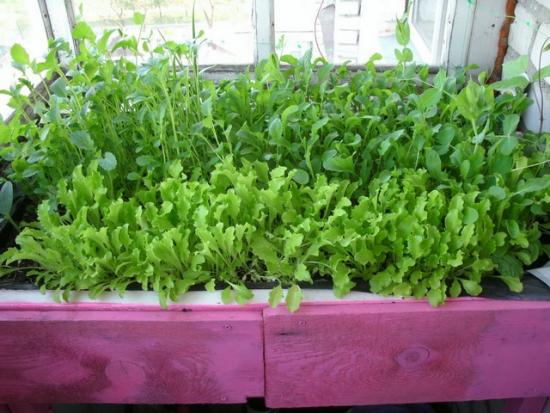
If forcing is planned before the New Year, then you need to immediately take care of additional light. Closer to spring, in February - March, this will no longer be necessary. For one parsley bush you need to plan at least 20 square meters. cm area. Fill the pot with fertile soil, make a hole with a stick, place the root and seal it into the ground so that 1.5 cm remains above the ground. After planting, pour the pot with warm water and place it in a fairly dark room.
This will stimulate root formation. After 10 - 12 days, expose the parsley to the light. You should not place it in a very warm room; a room where the temperature does not rise above + 18 degrees is suitable.
When watering parsley, you should avoid getting water on the greens and the root head. The first harvest of young green parsley can be seen in two to three weeks. The greens from the outside are cut off first.This must be done without leaving cuttings. In the future, at least once a week, the parsley should be watered with a complex mixture of fertilizers. Just like parsley, celery and even beets are also used for greens. Some plants can be grown for greens year-round, most notably peppermint.
Growing mint and other greens
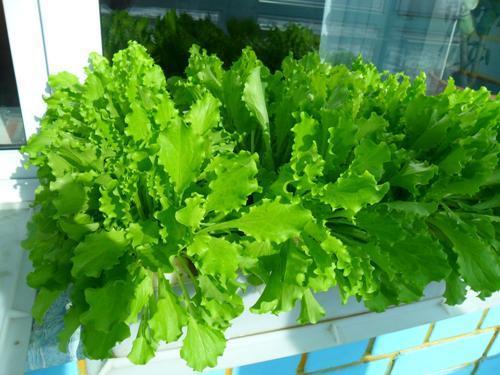
Mint - this plant is used not only in cooking, for preparing cold and hot drinks, baking and making seasonings; mint infusion will also help with some diseases. To grow mint, its seeds are planted in a pot in March and for ten days they are heavily sprayed with water every other day. After two months seedlings mints can be planted in separate pots or in a common container at a distance of 15 cm from each other. As soon as the ground part reaches a height of 30 - 40 cm, it can be cut off, leaving a stem of ten cm from the ground. Thus, mint will produce greenery all year round in an apartment. In addition to the above plants, you can grow at home:
- basil
- spinach
- garlic
- dill
Almost any greenery can be grown from seeds on a layer of damp cotton wool. Instead of soil, cotton wool is placed in the pot, watered with warm water and the seeds are laid out. On average, shoots appear after a week, and after 10 - 12 days you can cut off tender greens without removing the roots. With this cutting, the greenery will grow back again. It is worth saying that even with little effort you can provide your family with a harvest of fresh herbs in winter.
Interesting information about the vegetable garden

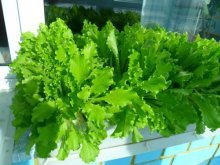
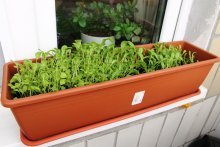
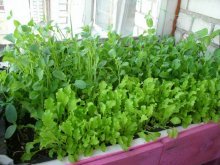

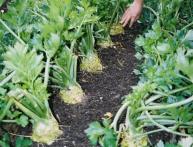


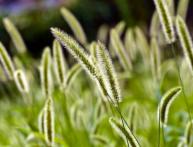

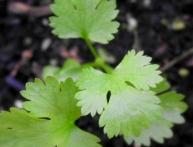

Comments
This is how I grew onions on the windowsill, and then finely chopped the entire harvest and hid it in the freezer, packaging it in small bags. Only small midges really bothered me - there was no way to save me from them.